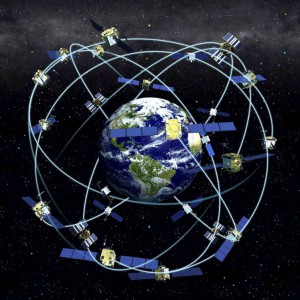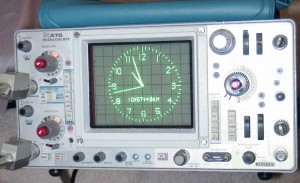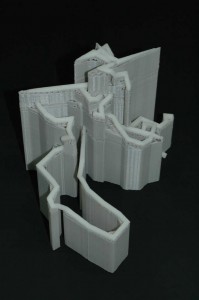
- This event has passed.
A Moment in Time and Space – GPS
05/10/2011 @ 7:30 pm - 11:00 pm
By Einstein, it is all relative! So, with a universe of no absolutes, how do we know what time it is for “when” we are let alone where we might be whenever?…
With a doctorate or three, some beer, a little hand-waving, and some good down-to-Earth detail and examples, we might find out where we are and learn something of the ethereal trickery for how a few clocks in space transmitting a radio time signal can form a Global Positioning System to tell us (relatively) where we are:
A Moment in Time and Space – A Rough Guide to GPS

A Constellation of GPS
DON’T BLINK! Not even for a moment, as Dr Dr Dave Luff untangles space and time for one small area…
All at our usual local coordinates:
Fellows Morton and Clayton54 Canal Street
Nottingham, NG1 7EH
Telephone: 0115 9506795
To find us, go through to the back of the pub and we’re up the spiral staircase in the restaurant. Just ask one of the friendly bar staff for NLUG if lost.
Food is also served through into the evening.
Wednesday 05/10/2011:
- 7:30pm: Meet
- 8:00pm: Talk
- 9:00pm: General discussions
Cuddly Gnus, Penguins, and All welcome!
Cheers,
Martin
GPS: Global Positioning System
AVR: Alf (Egil Bogen) and Vegard (Wollan)’s Risc processor, a microcontroller adopted by Atmel
CRT: Cathode Ray Tube
22 comments to A Moment in Time and Space – GPS
Leave a Reply
You must be logged in to post a comment.



21 October 2011: Galileo takes off!
Europe’s first Galileo satellites lift off
The Register 28/11/2011: Russia successfully launches Glonass-M
(And after the Phobos-Grunt recent disappointment) Sweaty Russian space bosses heave sigh of relief
… GLONASS, an acronym for Globalnaya navigatsionnaya sputnikovaya sistema or Global Navigation Satellite System, is Russia’s version of GPS and today’s satellite will join 30 others already in orbit to help Russians navigate…
China also recently joins the GNS elite:
Chinese confirm Beidou satnav system is operational
Two not-so-obvious problems with GPS to watch out for…
study reveals GPS jammer use
And:
OPERA grabs spanner, fixes kit, and slows down neutrinos
And then also sadly, an example just waiting to happen:
Boy died after satnav fault delays ambulance
There are also examples of blind reliance going wrong:
Satnav blunders blamed for £200m damages
Had to happen sooner or later:
Feds arrest rogue trucker after GPS jamming borks New Jersey airport test
Another ‘SatNav glitch’:
TomTom sat-nav devices hit by GPS ‘leap year bug’
Here’s an interesting parallel system to GPS:
BAE Systems’ Navsop navigation system rivals GPS
I wonder how well that works without dedicated broadcast transmitters? Or are transmissions from mobile phone masts and TV transmitters stable enough to be ‘good enough’? And for how long term? Interesting…
An example of another leap… Of one second recently:
Leap second and storm disrupt weekend web services
Surprising how much software simply assumes that leap days and leap seconds do not exist and yet simply use ‘local’ time for their critical functions! Note the admonishment in Vixie crond:
Another small launch to orbit, one giant leap for Galileo:
Galileo: Europe’s version of GPS reaches key phase
Here’s a rag-bag of recent GNSS bits and pieces, as some wish to join the party whilst others try to spoil the fun, and everyone wants to boldly party where noone has done so before:
India to have its own GPS soon
The Register: Seoul plans anti-GPS jamming system to thwart NORKS
ITT Exelis to provide anti-jam GPS antennas for KC-46 refueling aircraft
Galileo Satellite Achieves High Earth Orbit Positioning with GPS
The Inner Edge: Who Holds the Key to Indoor Nav?
DARPA makes an indoor GPS chip that’s smaller than a penny
So what’s with a second or so in 3.15 x 10^10 seconds (or 1000 years in less mind-numbing numbers)?
The Register: Brit horologist hammers out ‘first’ ATOMIC-POWERED watch
The shape of times to come?… 😉
For some extreme homebrew single bit twiddling of the sort our group experienced scribbled on the chart during Dave’s talk, see this RasPi enhanced version:
Homemade GPS receiver
Indeed some remarkably dedicated homebrew bit twiddling! Fantastic 🙂
For that elusive one second in 300 million years:
Optical lattice atomic clock could ‘redefine the second’
One comment to that article gives a very good reminder of how time and space are unavoidably connected: “even with this method, we are not really measuring time itself. By detecting atomic vibrations we are measuring distances, not time.”
Indeed, what is time when our own existence is a part of that very same time?
You may on occasion be mislead by out of date data for your ‘satnav’. There is now also this demonstration of critical civilian GPS systems being lead astray:
Texas students hijack superyacht with GPS-spoofing luggage
Really, noone blindly relies upon their GPS?…
On a slightly grander scale:
Pulsars: the GPS beacons of the cosmos
After all, to find where you are in time and space, it’s only a question of relative time…
One to watch out for here on Earth from up above!
Apple Maps flaw results in drivers crossing airport runway
India expands its ‘local’ GNSS:
India’s GPS alternative launches second satellite
And yet another example of when the use of GNSS “goes wrong”…
Map illustrates ‘Russian GPS’ failure
Japan plans SEVEN satellite launches to supercharge GPS
Meanwhile… Anyone lost for a bit of a spoof?…
Study maps ‘extensive Russian GPS spoofing’
A little something not to be relied upon, and yet all too many people WILL rely upon GNSS simply because it appears to be reliable. Until it is not.
Good comment as always can be found on the corresponding The Register article: How do you sing ‘We’re jamming and we hope you like jamming, too’ in Russian? Kremlin’s sat-nav spoofing revealed
Dangerous stuff… Anyone for thousands of tonnes of ship or an airliner landing in your living room ‘by mistake’?…
GNSS: Global Navigation Satellite System
Now this ain’t supposed to happen! Timelessly losing your position?!!…
In great The Register reporting:
Galileo, Galileo, Galileo, where to go? Navigation satellite signals flip from degraded to full TITSUP* over span of four days
That is quite an outage! Also, not the best of birthdays for the system 🙁
At least my multiple sources for ntpd have kept ticking along… 😉
Beware common mode or common source faults 🙁
Meanwhile…
China marches along to complete the latest upgrade to BeiDou and to bring in its neighbors ever closer:
China launches final satellite in challenge to GPS
China praises Pakistan SatNav collaboration
Does that all add up to making the world a smaller place?
To misquote a fabled supposed Chinese saying: May we live in prosperous times!